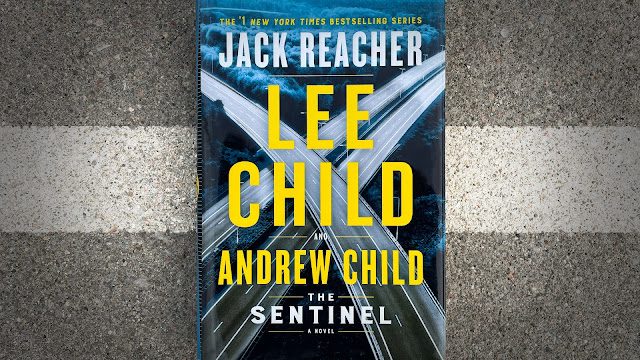Since Hollywood is hell bent on the cyclical revitalization of existing IP, I wondered a few years ago what the future held for the “Ghostbusters” franchise.
The original 1984 movie — which epitomizes theatrical comedies of that era — spawned a 1989 sequel, a Saturday morning cartoon (remember when Saturday was “Cartoon Day”?), a breakfast cereal (which was delicious), a Hi-C fruit drink (who doesn't love “Ecto Cooler”?), and a proton pack full of licensed toys, games, apparel, and merchandise.
It also ranks as one of my favorite movies. I remember seeing “Ghostbusters” when I was 11, during its original theatrical run. I was staying with my older brother (who lived in Texas), and he took me to see it (we also saw “Gremlins” during that visit).
Any time there is a theatrical revival of one of the movies (typically an anniversary screening), Bridget and I make a point of attending.
The first attempt to bring back the franchise resulted in a female-led reboot in 2016, helmed by writer/director Paul Feig. I didn’t have my blog when that film was released, but I remember enjoying it at the time. It was a significant departure from the original, and the film had its critics.
As I’m writing this post, there is a bit of controversy surrounding the 2016 film and the upcoming Ghostbusters Ultimate Collection Blu-ray box set. Specifically, the reboot film was left out of the set, prompting Feig to take to Twitter (the tweet resulted in Sony announcing they will include a code for a free digital copy of the film with the set).
The success of the original “Ghostbusters” was largely dependent on the comedic personalities of stars Bill Murray, Dan Aykroyd, and Harold Ramis — actors who had cut their teeth at places like Saturday Night Live and SCTV.
Because their unique personalities were so integral to the film, any sort of 21st century reboot is a challenging prospect.
Popcorn films during the 1980s were largely star driven. The actor on the movie poster was typically more important than the movie itself. It isn’t quite the same today (the possible exception being Dwayne Johnson, an actor who imbues a bygone era).
Writer/director Jason Reitman (son of “Ghostbusters”/“Ghostbusters II” director Ivan Reitman) seems to have put the franchise in order with “Ghostbusters: Afterlife.”
The film works diligently to serve as both a sequel to the original franchise and a reboot for younger fans.
It's a juggling act that has been tried before with older movie properties. Sometimes it works. Sometimes it doesn’t.
In my opinion, one of the more successful attempts at this has been the streaming series “Cobra Kai” — a show that strikes the right chord as a sequel/reboot of “The Karate Kid” franchise (read my reviews of “Cobra Kai” Season 1, Season 2, and Season 3).
“Ghostbusters: Afterlife” takes place 32 years after the events in “Ghostbusters II.” The original busting crew of Peter Venkman (Bill Murray), Ray Stantz (Dan Aykroyd), Egon Spengler (the late Harold Ramis), and Winston Zeddemore (Ernie Hudson) disbanded long before due to a dearth of work.
Spengler moved to Summerville, Oklahoma, to continue his paranormal pursuits from a dilapidated farm outside of town. As the movie begins, Spengler is trying to capture some sort of supernatural spirit (whose source is an abandoned mine).
His attempt fails and he dies in the process.
As a result, his estranged daughter Callie (Carrie Coon) and her children, Trevor (Finn Wolfhard), and Phoebe (Mckenna Grace) relocate to the Summerville farm — a decision made as a result of being evicted from their apartment.
Phoebe soon learns that the farmhouse is haunted. Finn discovers the original 1959 Ecto-1 ambulance in barn, and sets to work repairing it.
As the film progresses, the kids encounter additional ghosts, entities, and spirits.
Along the way, additional supporting players are introduced.
Gary Grooberson (Paul Rudd) is a summer school science teacher (with an interest in seismology) who takes an interest in Phoebe’s supernatural suspicions. He is also a longtime fan of the work of the Ghostbusters team. (The original Ghostbusters commercial being shown on YouTube is a nice touch.)
Phoebe’s summer school classmate, Podcast (Logan Kim), is a quirky tech nerd who is fascinated with the haunted farm and serves as a loyal sidekick.
Finn strikes up a friendship with a girl named Lucky Domingo (Celeste O’Connor), a high school student who works part-time with Finn at a retro drive-in diner called Spinners.
The film itself is obviously built for the “Stranger Things” generation (I don’t think it was a coincidence that “Stranger Things” star Finn Wolfhard was cast in this movie). Frankly, I’m not sure that this film would have happened without the Netflix series paving the way with its supernatural nostalgia.
While the original two “Ghostbusters” movies tended to be broadly comedic in tone, “Ghostbusters: Afterlife” plays things a little more serious. The humor serves as an accent rather than the point of focus.
I really appreciated Reitman’s subtlety — in terms of story and direction — in “Ghostbusters: Afterlife.”
I know some have grumbled that the film relies too much on “nostalgia” and “fan service” moments. Frankly, I think that is an unfair criticism.
These days, nearly every reboot/sequel property based on long-gestating intellectual property (IP) — such as recent entries in the “Star Wars” franchise — provide this sort of fan service.
If Stay Puft Marshmallow “Mini Pufts” are an example of “too much fan service,” then I say, “the more fan service, the better!” I loved the sequences involving the little confectionery creatures.
Jason Reitman was the writer/director/producer of the 2009 film “Up In the Air.” Parts of that movie were filmed here in Omaha. My brother-in-law Sean (who died in 2017) served as an extra in airport scenes shot at Eppley Airfield.
In recent interviews, Reitman has talked about the family aspects involved in making “Ghostbusters: Afterlife.” He was a 6-year-old when the original movie was released, and I’ve seen production photos of him spending time on set with his father.
There are cameos in this film from some of the original cast members. While this could have been overblown aspect of the film, I thought it was handled in just the right way.
I had a great time watching “Ghostbusters: Afterlife.” I loved the overall feel of the movie, the performances, and the tone.
As Bridget and I were watching the movie, I thought to myself, “I’d like to see more adventures with these characters.”
To that point, be sure to stay through the entire credits scroll for both “mid-credit” and “after-credit” Easter eggs.





































